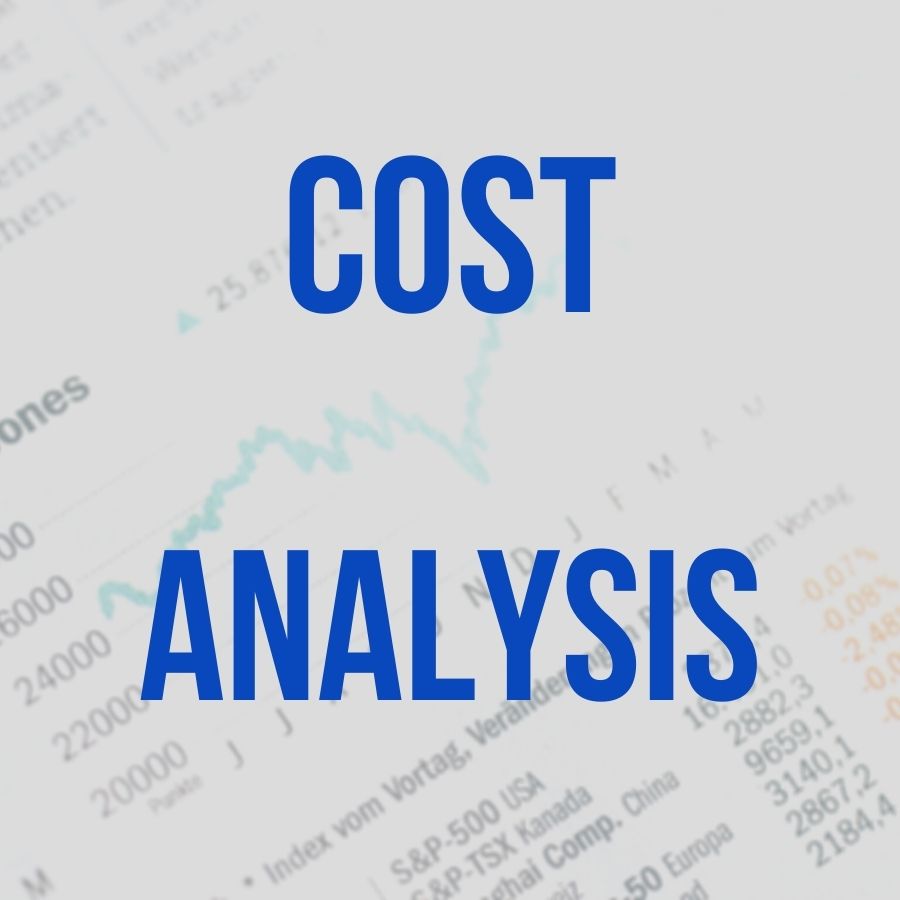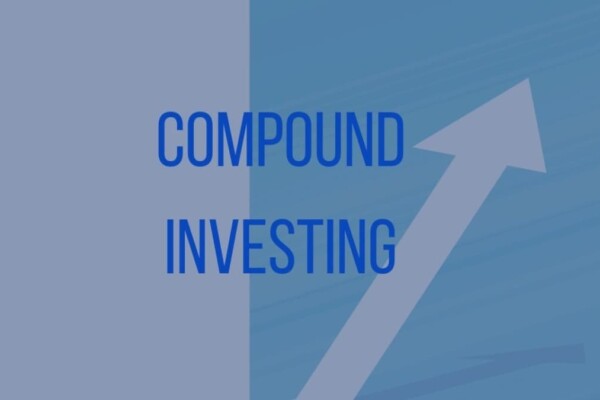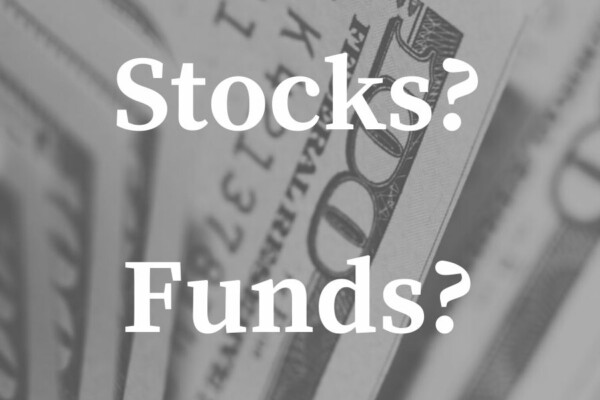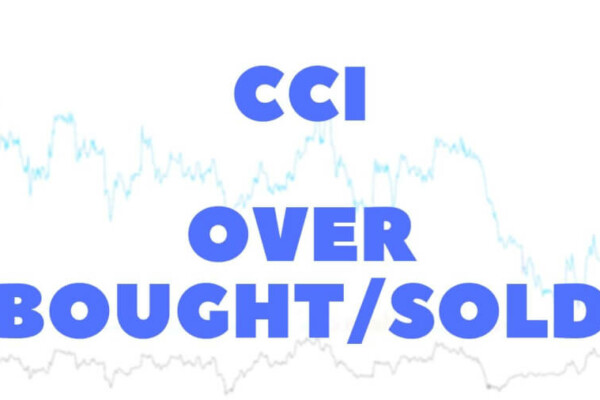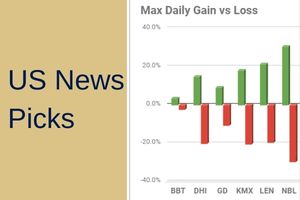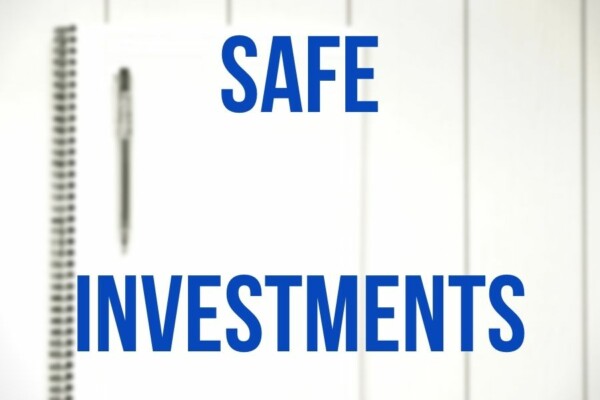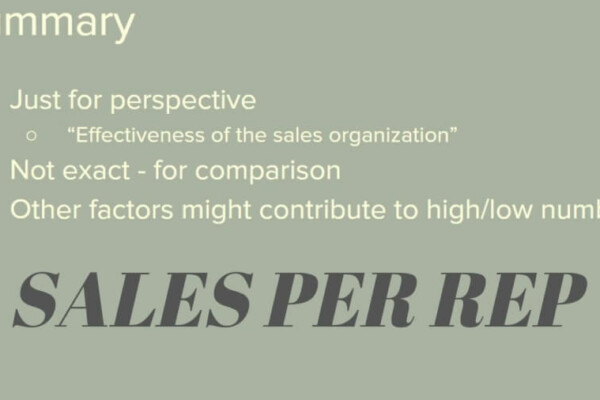What are the cost analysis methods that investors can use? First, an investor needs to understand the categories of costs that affect the company they’re analyzing. Then, they need to apply their knowledge of the industry when forecasting future costs (and profits). This should put investors in a favorable position to judge a company’s aptitude when it comes to selecting projects.
A cost analysis is an attempt to understand the nature of a company’s expenses. Most of growth investing is focused on revenue, obviously. But, costs cannot be ignored. It’s a company’s costs that determine how much of that revenue is taken to the bottom line and is available for shareholders.
This is made evident in the Stock Valuation post and spreadsheet. Costs affect future profits. Future profits affect the current value of the stock. So, your understanding of costs and ability to forecast them will have a direct impact on the quality of your stock valuations. As we walk through the subject of cost analysis, we’ll delve into that further.
Costs might seem very straightforward. However, there are a lot of different ways to think about them. You might think that all costs end up on financial statements. They don’t. There are a lot of different classifications besides cost of goods sold (COGS) and selling, general, and administrative (SGA) expenses.
Time plays an important part in costs. As I often say, investing (and business in general) revolves around three primary considerations: money out, money in, and time.
Over a long enough timeline, all costs change. I don’t just mean that all fixed costs are ultimately variable. I mean that time is volatility. Over a long enough period, about anything can happen. Including events that will have an enormous impact on costs.
This, once again, highlights why I suggest that investors stick to analyzing a handful of industries. Investing and business are complicated. You’re smart, of course, but you also only have so much time in the day. Only analyzing certain industries will help you understand companies’ cost profiles better. It will also put you in a position to benchmark against other companies in the same industry.
Classifying costs
Costs can be categorized based on the way they behave. Not every expense is it going to fit perfectly into one cost category. Even if the two categories are opposites. Cost categories aren’t mutually exclusive. Costs can be put into several different categories at the same time.
Ultimately, no matter how costs are classified, they should be looked at through the lens of how they are allocated to the company’s products and services. This is because all costs are incurred to deliver those products and services to paying customers. A company must be sure that the revenue received from customers is adequate for the costs incurred.
Classifying costs for publicly traded companies is hard. They don’t like to break information down any more than they absolutely have to. It takes time and effort to learn the intricacies of a new industry. This is why it pays to stick to a few industries and get to know them really well.
Below, are some of the categories to consider when you are analyzing a potential investment. Additionally, I included some real-life examples of the costs pulled from publicly traded companies’ Form 10-K (where applicable).
Fixed and variable costs
This is, probably, the most fundamental classification of costs. The names are pretty self-explanatory.
Fixed costs are those that remain constant regardless of the level of activity. Salaries, rent/leases, depreciation, and insurance are all generally fixed costs. Fixed costs don’t change in aggregate, but the higher the level of production the lower the cost per unit will be.
Variable costs, on the other hand, change based on the level of activity. It’s not necessarily production that drives variable costs. Though, that’s often the case. As a rule of thumb variable cost per unit doesn’t change that much. But of course, the amount of total variable costs can change dramatically. Raw materials and sales commissions are two good examples of variable costs
Hybrid costs
As mentioned above, some expenses could be viewed as hybrids. Partly fixed and partly variable.
Surprisingly, a lot of costs probably fall into this category. If you looked at them statistically, they wouldn’t have a perfect correlation to activity. Nor would they be the same month after month, year after year.
An easy to understand example of hybrid costs might be utilities. Utilities usually have a fixed component and, of course, a variable component – depending on the amount used. A contract with the shipping company might serve as another good example. Here, a company might pay a fixed amount for shipping, and then a variable amount per mile.
As mentioned in the Profit Margin Analysis of Stocks video/post – the estimation of fixed costs is important because of its effect on operating leverage. You can read/watch that post for more information. But, the gist of it is that huge fixed expenses can help a company if sales are good, and crush it if sales are bad.
Fixed and variable costs in stock analysis
Example industry: Petroleum refineries
Example companies: Exxon Mobil Corporation (XOM), Chevron Corporation (CVX), ConocoPhillips (COP)
Petroleum refineries are very capital-intensive endeavors. They carry a lot of assets on their balance sheet. Therefore, they charge a lot of depreciation (fixed expense) against revenue.
Also, it takes a lot of manpower to refine crude oil into useful products. This means a lot of labor costs. These are assumed to be the bulk of production and operating expenses.
Finally, as far as I can tell, refineries have to buy raw materials just like most other manufacturers. The cost of crude oil fluctuates but always seems to constitute a big percentage of all costs.
Here’s a breakdown of the biggest fixed and variable costs in the petroleum refining industry:
| Ticker | Notable fixed costs | % of revenue |
|---|---|---|
| XOM | ||
| Depreciation (and depletion) | 7.2% | |
| COP | ||
| Depreciation (depletion and amortization) | 16.6% | |
| CVX | ||
| Depreciation (depletion and amortization) | 19.9% |
| Ticker | Notable variable costs | % of revenue |
|---|---|---|
| XOM | ||
| Material (Crude oil and product purchases) | 54.3% | |
| Labor (Production and manufacturing expenses) | 13.9% | |
| COP | ||
| Material (Purchased commodities) | 32.3% | |
| Labor (Production and operating expenses) | 14.5% | |
| CVX | ||
| Material (Purchased crude oil and products) | 54.7% | |
| Labor (Operating expenses) | 14.6% |
Product and periodic costs
Product and periodic costs might be fixed or they might be variable. What differentiates the two is whether they are included in inventory or not.
For simplicity’s sake, product costs can be considered those that end up in COGS (also known as cost of sales, COS) on the income statement. Periodic costs, on the other hand, are those that are subtracted from gross profit and are called SGA costs on the income statement.
Product costs are also sometimes called manufacturing costs. That is, if the company you’re analyzing is a manufacturer. If they’re not, then you can think of them as the costs incurred to prepare a product or service for delivery. (Raw) materials, direct labor, and overhead are the primary components of product or manufacturing costs.
Periodic Costs will never end up on the balance sheet as product costs do (inventory). These costs are charged against revenue as they are paid. They can also be thought of as non-manufacturing costs. Administrative salaries, research & development (R&D), and marketing are all periodic costs.
Another distinction that might be made is that product costs are a byproduct of the given industry. Product cost can certainly be managed, but there might not be much wiggle room. Periodic costs, on the other hand, are more discretionary. Periodic costs should be held more accountable for earning an appropriate return on investment (ROI) than product costs.
Product and periodic costs in stock analysis
Example industry: Pharmaceutical manufacturing
Example companies: Pfizer Inc. (PFE), Amgen Inc. (AMGN), Merck & Co., Inc. (MRK)
Pharmaceuticals is, generally, one of the preferred business models. Once a pharma company has a customer, they likely have them for life. Therefore, margins for companies that sell popular drugs are pretty healthy.
The property, plant, and equipment needed to manufacture drugs is noteworthy – but not nearly as much as many other manufacturers.
Because the lifetime value of a customer is so high, a lot is also spent on sales and marketing. These expenses are included in the SGA section of the income statement.
Also, as you might expect, research and development constitutes a large chunk of expenses. You’ll find R&D itemized on most pharma income statements.
| Ticker | Notable product costs | % of revenue |
|---|---|---|
| PFE | ||
| Manufacturing property, plant, & equipment and quality control (Cost of sales) | 19.7% | |
| AMGN | ||
| Manufacturing property, plant, & equipment and quality control (Cost of sales) | 18.6% | |
| MRK | ||
| Manufacturing property, plant, & equipment and quality control (Cost of sales) | 30.1% |
| Ticker | Notable periodic costs | % of revenue |
|---|---|---|
| PFE | ||
| Sales and marketing (Selling, informational and administrative expenses) | 27.7% | |
| Research and development (expenses) | 16.7% | |
| Amortization (of intangible assets) | 8.9% | |
| AMGN | ||
| Sales and marketing (Selling, general and administrative) | 22.0% | |
| Research and development | 17.6% | |
| MRK | ||
| Sales and marketing (Selling, general and administrative) | 22.7% | |
| Research and development | 21.1% |
Direct and indirect costs
These costs might be fixed, variable, product, or periodic. Direct and indirect costs refers to those costs that can (or cannot) be precisely traced to a particular product or service.
Put another way, direct costs affect a single product or service. Conversely, indirect costs will almost always affect multiple products or services. The best example of direct costs are materials and (direct) labor. Sometimes marketing, sales, or R&D related costs can be considered direct too.
Indirect costs, on the other hand, usually encompass the bulk of costs incurred by a company. Things such as overhead, supervisor salaries, real estate, and administrative salaries fall in this category.
Direct and indirect costs in stock analysis
Example industry: Commercial banks
Example companies: Bank of America Corporation (BAC), U.S. Bancorp (USB), The PNC Financial Services Group, Inc. (PNC)
An example of direct costs in banking is the interest paid to account holders. Every dollar of interest expense can be traced to a specific type of account (savings, CD, etc.). As you might imagine, interest expense constitutes a large part of a commercial bank’s overall expenses.
Another large percentage of expenses for commercial banks is paying the people who provide the services. Salaries could be considered an indirect expense. It depends on the individual’s job, I suppose, but most bank employees provide service for a multitude of different accounts.
| Ticker | Notable direct costs | % of revenue |
|---|---|---|
| BAC | ||
| Interest expense | 24.5% | |
| USB | ||
| (Total) Interest expense | 20.8% | |
| PNC | ||
| Interest expense | 21.3% |
| Ticker | Notable indirect costs | % of revenue |
|---|---|---|
| BAC | ||
| Compensation (and benefits) | 35.0% | |
| USB | ||
| Compensation | 29.6% | |
| PNC | ||
| Compensation | ?% |
Relevant and sunk costs
It’s hard to imagine that serious business people would care about anything but that which is relevant.
Well, maybe for anyone who’s never actually held a corporate job ?.
The term “sunk cost fallacy” is well known. But, perhaps, not as well acknowledged as it should be.
Of course, the only costs that are relevant are the ones that the company can control. If they can’t be controlled then they shouldn’t be factored into decision making. Sunk costs are not relevant. This is because they have already been spent and that can’t be undone. It’s because sunk costs can’t be undone that they shouldn’t affect future decision making.
Hopefully, most of the costs that a company deals with are relevant. Even fixed costs, to a certain extent, can be managed (by sale of the asset, or other means). There are always sunk costs, however. It is the emotional attachment to these costs that can get a company into trouble.
Sunk costs might include R&D, money spent on an acquisition, or marketing. This money might’ve been spent on something that produced little, none, or a negative return on investment (ROI).
Bad investments hurt, certainly. But the cliché “throwing good money after bad,” was probably conceived by somebody reflecting on sunk costs. Any company that you want to invest in should be able to suck up it’s bad decisions and move on. If it acts like the government and feels like it can spend its way out of any problem, that should be a red flag.
Relevant and sunk costs in stock analysis
Example industry: Passenger Air Transportation
Example companies: Delta Air Lines, Inc. (DAL), Southwest Airlines (LUV), American Airlines Group Inc. (AAL)
It’s nearly impossible to look at a Form 10-K and know which costs are sunk. So, it’s really just a matter of understanding the implications of sunk costs for the industry you’re analyzing. You can (and probably should) estimate sunk costs if you feel that they are impactful. But, it’s unlikely you’ll ever get an accurate figure.
In the case of airlines, one way costs are sunk is through the purchase or leasing (a contract) of airplanes. Both options require enormous cash expenditures that are, essentially, locked in for at least the short-term. Therefore, these costs have little bearing on short-term decision making.
Here’s an article that discusses Delta’s sunk costs in light of the Covid-19 mess: Source.
Opportunity costs
This is another one of those costs that business people seem to know of, but don’t necessarily act upon. Opportunity costs are critical for decision making. Anytime there are different courses of action to consider, opportunity costs are probably present.
Opportunity costs are the benefits given up by not choosing a particular course of action. In other words, the money a business would’ve made if it had made a particular choice. How does revenue become a cost? Because you lost out on that revenue when you decided not to take that course of action.
For instance, consider a company that is weighing the benefits of a market development strategy. E.g. looking to sell existing products/services in new geographic areas.
There will be expenses, of course, associated with market development. Things like staffing, real estate, and marketing. Should they decide NOT to move forward, they will save on those costs, true. But, they will also sacrifice all of the revenue they would’ve made had they decided to go through with the market development. That’s the opportunity cost – the lost revenue.
That does not mean that every project should be undertaken because there is an opportunity cost associated with it. That’s not practical. It does mean, however, that opportunity cost should not be ignored when making decisions.
Opportunity costs in stock analysis
Example industry: Line-Haul Railroads
Example companies: Union Pacific Corporation (UNP), CSX Corporation (CSX), Norfolk Southern Corporation (NSC)
Opportunity costs are another type of cost that doesn’t show up in a Form 10-K. But, they are worth understanding for the part they can play in stock valuation.
Consider a railroad company that is weighing the costs of servicing a new geographic area. Maybe doing so doesn’t meet their threshold ROI for new projects. If they opt to service a different geographic area, or use those funds in a different manner, they will still have to consider the foregone revenue as a cost.
An opportunity cost for the opportunity they passed on.
Cost-benefit analyses (CBA) and the companies you invest in
I’ve written frequently about how business (and investing) has three primary components
Money out – Money in – Time
Companies judge projects and make decisions based on those three things. Consciously and subconsciously. Dozens, hundreds, or maybe thousands of times a day. Fundamentally, that’s all they do.
If you’re investing in a growth company then it’s important to you that they invest in profitable projects. Projects with high ROIs. Therefore, you are relying on them to perform thorough and accurate cost-benefit analyses. Doing so helps ensure that they are taking their costs, and the risk associated with, them into careful consideration.
What is a cost benefit analysis?
A cost-benefit analysis is sometimes also known as a benefit-cost analysis (BCA). It’s by using a cost-benefit analysis that companies can analyze projects to determine if they’re suitable for investment.
A project could be anything. Part of a growth strategy. Replacing property, plant, and equipment. Purchasing new software. Anything that involves spending money, waiting a certain amount of time, and then receiving money.
A cost-benefit analysis is exactly what it sounds like. It’s an analysis of the costs and the benefits (revenues, profits) from a project or investment. Performing a cost-benefit analysis for all potential projects allows them to be compared side-by-side so that the most appealing ones may be chosen.
The better a company is a choosing projects, the better their financial performance should be.
How are cost-benefit analyses performed?
There’s no one absolute way to do a cost-benefit analysis. However, there are concepts that need to be kept in mind by the company performing it. Not every methodology is going to work for every industry.
In general, here’s what should be included:
- An understanding of the categories of variables that will be used in the analysis. For example, revenue, costs, cost savings, taxes, depreciation, and changes in working capital.
- An identification of the specific variables. For example, revenue from new sales, cannibalization of sales, opportunity costs, relevant costs, purchased & sold assets, and the method of depreciation of assets.
- The timing of the costs and benefits throughout the life of the project. For example, actual cash flows in and out due to the undertaking of this project. Most importantly – when those cash flows are expected to take place.
- The computation of the net effect of the costs and benefits across the life of the project. For example, net present value (NPV), internal rate of return (IRR), profitability index, and payback period.
- An analysis of the calculations. For example, determining which calculation is most applicable to the company. Comparing projects and making a final recommendation.
Cost-benefit analyses are complicated. They take a lot of research and require a lot of forecasting under uncertainty. If the project process is lackadaisical, the likelihood of selecting poor (or suboptimal) projects increases.
Cost benefit analysis dangers
A cost-benefit analysis, fundamentally, is just a matter of mathematics. The output will only be affected by the input. The risks and uncertainties from a cost-benefit analysis typically come from “soft” errors rather than “hard” ones.
These risks can be manifested through poor judgment in forecasting, misrepresentation of data due to an agenda, and inaccurate sources of information.
Poor judgment and forecasting might be a situation where the appropriate individuals didn’t qualify the initial forecast. They didn’t (or we’re not allowed to) apply their expertise. This, of course, presupposes that the appropriate methodology was used to generate the initial forecast in the first place.
Companies are made up of humans and humans have agendas. Especially in the workplace. There’s always the possibility that interested parties could over or under-represent revenues/costs in order to provide support for their own positions.
Inaccurate data can often come from taking shortcuts. For instance, using information from a different project in order to save time. Or ballparking numbers rather than researching them.
A cost-benefit analysis is only as good as the accuracy of its inputs. But, a company needs to be mindful of the cost-benefit trade-off in the cost-benefit analysis.
What’s meant by that?
Well, at a certain point, decisions need to be made with the information available. Nobody (companies in particular) makes decisions with perfect information. Sometimes you gotta just move forward with what you have.
Finally, we think of everything in the investing/business arena to be measurable in dollars and cents. However, that’s not always the case. There are almost always intangibles at play too. Concepts such as morale, loyalty, image, environmental effects, among other things.
These concepts matter and must also be taken into account when performing a cost-benefit analysis.
Ravi Kagda, Sr. Equity Research Analyst | CFA Level 2 Candidate
When you’re forecasting costs, are there any specific categorizations (fixed/variable, direct/indirect, product/periodic, etc) that you consider?
Yeah while forecasting costs its good to go for common size analysis. If in the past few years costs are occurred as the almost similar % of sales then we should have adapt that methodology. The simplest assumption we take the better outcome we get. As per the every line item we need to plot on the excel do common size analysis of it and then for each line item do separate analysis on same QoQ or YoY manner.
Do you perform a “feasibility check” for the costs you forecast? If so, how?
For feasibility check I’m doing common size analysis as I said in 1st point as well as one more thing is main expense for any manufacturing company is raw material expense on which I perform sensitivity analysis and gravity analysis so if there is increase or decrease in the costs then we can select case according and it will give us output according.
Are there any common mistakes that people might make when forecasting costs?
I can say majority people are doing common mistakes while forecasting costs as the process itself for forecasting costs takes quantitative measures as well as qualitative measures both. Some economic conditions as well as industry related measures also we need to focus on. If there is any changes in the prices of the raw material then many people are not considering it but they take into consideration only quantitative measures like average or weighted average of last 5 years data or as per the last year which may possibly give horrible valuation result.

